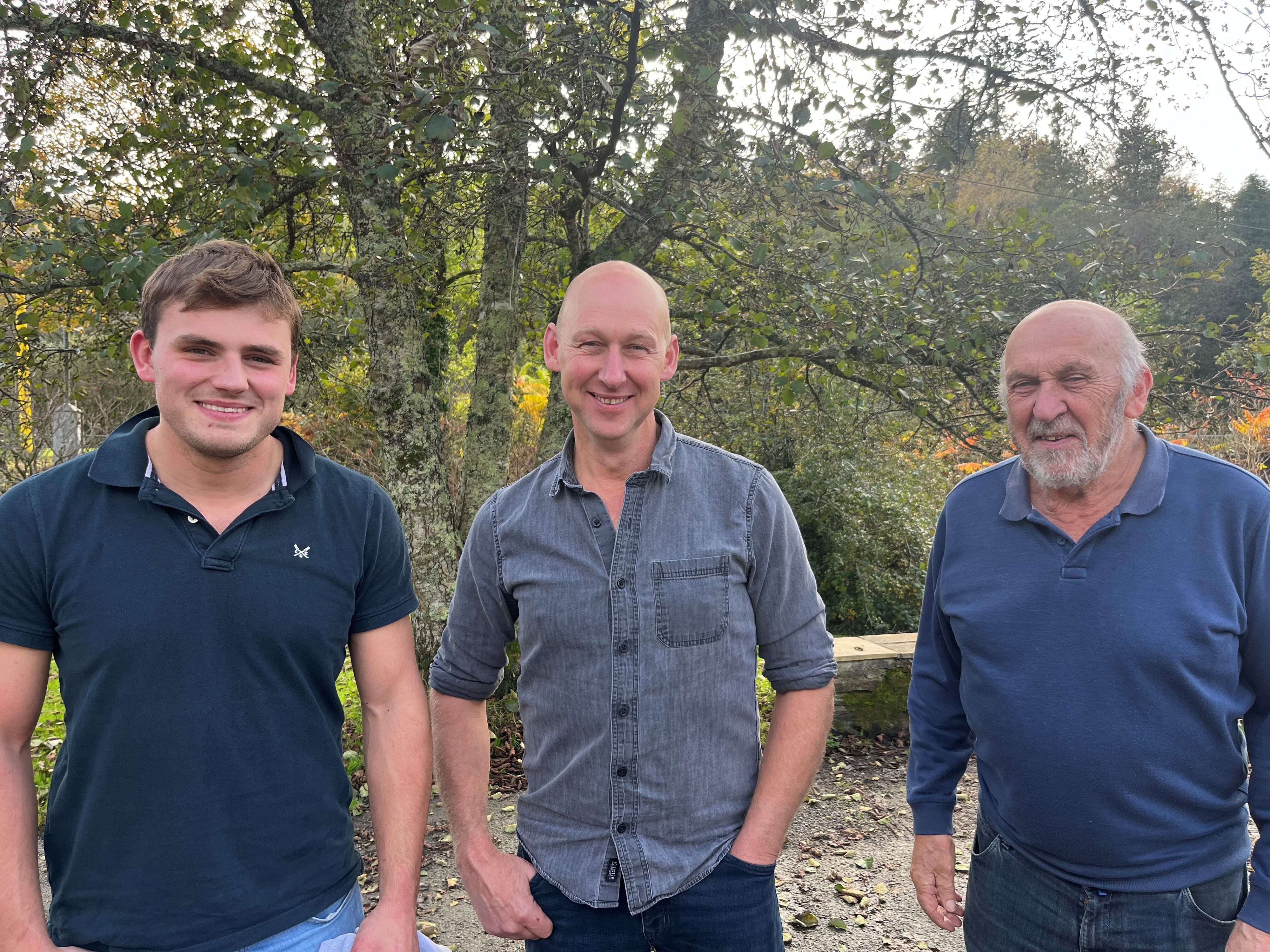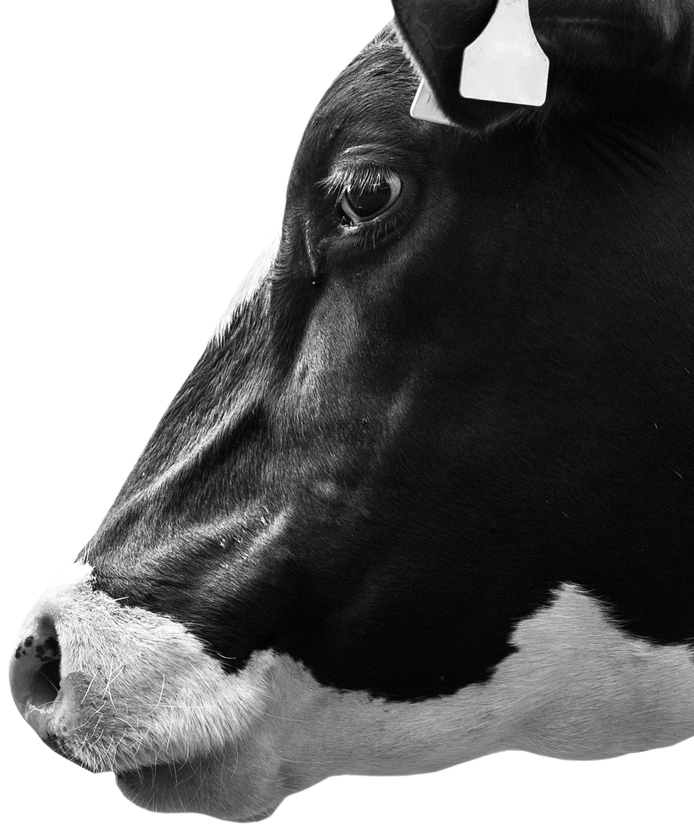Joe, Andrew and Matthew Rowe, Great Tredinnick Farm, Liskeard Cornwall
Three generations of the Rowe family – Joe, son Matthew and grandson Andrew – run a 450-cow cross-bred herd, plus 250 followers, as well as a 300-head beef enterprise, forage crops and renewables on their 370-hectare unit.

A group of 200 cows are milked through four Lely robots with the other 250 cows milked twice a day using a conventional 24:48 herringbone parlour. The Pro Cross breeding programme, now in its third year, uses Norwegian Red, Montbeliarde and Holstein genetics to produce strong, fertile, healthy and long- lasting cows.
Cows calve in two blocks of 12 weeks, beginning January and June. Cows are housed in winter and fed a TMR. Summer grazing spans from late March to October, for those milked in the conventional parlour, with cows fed to yield in the parlour all year round.
High annual rainfall challenges the forage crop planning and some of the 75 hectares of maize grown is under film to promote germination and growth. Maize ground all has a winter cover crop to improve soil health.
The 250 hectares of grass used for silage and grazing includes 18 hectares of herbal leys, grown as part of an SFI scheme as a valuable forage for the dairy cows, and a further 40hectares of wheat is grown to feed to cattle.
Sustainable Farming Incentive (SFI) options are used to support environmental management on the farm. And the introduction of more herbal leys and less ploughing of land for cropping and reseeding will help to reduce their carbon footprint and improve soil health.
With a heavy reliance on home-grown forage, and appreciating the need to enhance soil health and productivity, the Rowes take slurry management seriously to ensure its value is maximised. They add slurry bugs to help break down bacteria and improve nitrogen availability.
Herd health is a priority, and somatic cell counts are monitored daily through the robots, with NMR records used across the herd. Cows are bedded on the environmentally friendly bedding Envirobed and a multi-strain bacterial bedding additive Cobiotex is applied to beds weekly to help absorb harmful bacteria and reduce the risk of digital dermatitis.
Cows are locomotion and body condition scored monthly.
A strict Johne’s-disease control plan, which has been in place for 10 years, is followed for the milking herd and heifer replacements. The current infection rate – the average test value – is 5.8.
Calves are tested and vaccinated for the appropriate pneumonia strain.
Monthly reports form the basis of discussions with their vet and nutritionist, and action reports, for example selective dry cow lists, are drawn up
The farm, of which the dairy herd is the main enterprise, employs three full-time staff and relief milkers alongside Andrew, Matthew and Joe.
Opportunities to undergo further training and to be involved in decision making is encouraged. “A work-life balance is important to us,” says Matthew. “So we are involved with improving areas of the business that affect us all and ensuring a good working environment.”
With the purchase of a neighbouring farm, comprising 78 hectares and buildings, expansion of the dairy herd is on the cards and the team will be integral in its success.
“Our target is to produce five million litres of milk a year, and we have a sound business plan that meets the needs of all those involved,’ adds Andrew “To help us achieve this, we seek advice from outside the business, and also have regular family discussions.”
Key facts
- Cattle no: 450 cross bred cows and 250 followers 300 beef
- Milk yield: 9,630kg at 4.17% fat, 3.23% protein
- Somatic cell count:193,000/ml
- Mastitis rate: 15 cases per 100 cows per year
- Calving interval: 419 days
- Age at first calving 25 months
- Milk buyer: Trewithen Dairy
